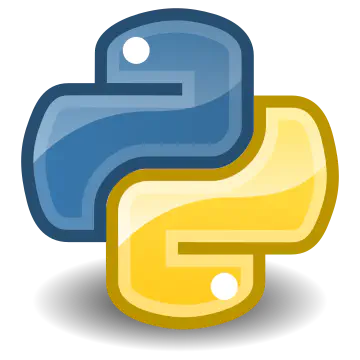迷你課程:Python-2~函數邏輯與迴圈

Quick look
在這篇教學中,我們將深入探討 Python 中函數的邏輯與迴圈的應用,幫助學習者掌握基本程式設計技巧。課程內容涵蓋條件判斷、函數設計、迴圈使用、資料結構操作等關鍵概念。
函數的定義與應用
函數是一段可以重複使用的程式碼邏輯,以下是函數的基本用法:
# 主函數範例
def main():
x = int(input())
print('The number is', square(x))
def square(n):
return n * n
上述範例中,我們定義了一個 square 函數用來計算平方數,並透過 main 函數接收輸入。
條件判斷
條件判斷讓程式能根據不同情況執行對應邏輯。基本條件判斷:
if x < y:
print('x is smaller than y')
if x > y:
print('x is larger than y')
if x == y:
print('x is equal to y')
但上面的寫法會讓程式評估3次 if,如果是小程式倒還好,但如果是複雜的程式就會影響效能,有沒有更好的方法呢?其實我們可以使用elif,這樣只有當if的結果是False時,程式才會往elif去運算,因此如果x<y為真,就只要運算一次即可。
if x < y:
print('x is less than y')
elif x > y:
print('x is larger than y')
elif x == y:
print('x is equal to y')
但似乎還可以再更精簡,因為x如果不是小於y或大於y,那一定是等於y,所以第三個程式邏輯基本上不用運算,在這種狀況下,可以使用else:
if x < y:
print('x is less than y')
elif x > y:
print('x is larger than y')
else: # 假設x==y 無需再詢問
print('x is equal to y')
接下來再看另外一個例子:
if x<y or x > y:
print('x is not equal to y')
else:
print('x is equal to y')
上面的語法基本上都沒有錯,但不夠Python,以下是更簡潔的方式:
if x!=y:
print('x is not equal to y')
else:
print('x is equal to y')
或是:
if x==y:
print('x is equal to y')
else:
print('x is not equal to y')
範圍判斷
對於成績分級的應用,如果90-100分為Grade A,80-90分為Grade B,70-80分為Grade C,60-70分為Grade D,而小於60分為Grade F,今天希望使用者在輸入一個分數,可以輸出他的成績分級,初步可以寫成:
score = int(input('Score: '))
if score >= 90 and score <=100:
print('Grade: A')
elif score >= 80 and score <90:
print('Grade: B')
elif score >=70 and score <80:
print('Grade: C')
elif score >=60 and score <70:
print('Grade: D')
else:
print('Grade: F')
上面的程式利用了and來連接兩個邏輯運算式,雖然合理,但這個程式看起來不夠簡潔,接下來該怎麼做呢?Python可以允許範圍的界定如:
if 90<=score<=100:
print('Grade A')
elif 80<=score<=90:
print('Grade B')
elif 70<=score<=80:
print('Grade C')
elif 76<=score<=70:
print('Grade D')
else:
print('Grade F')
這樣看起來似乎好一點了,但我們不難發現,elif只有在if運算結果為False時才會開始運算,所以如果輸入的成績如果若在某個數值以上,就必然不會落入較低的分級,因此我們可以簡化成:
if score >=90:
print('Grade A')
elif score >=80:
print('Grade B')
elif score >=70:
print('Grade C')
elif score >=60:
print('Grade D')
else:
print('Grade F')
奇偶數判斷函數
定義函數檢查數字是否為偶數,我們可以試著先這樣寫:
def main():
x = int(input("What's x? "))
if is_even(x):
print('Even')
else:
print('Odd')
def is_even(n):
if n % 2 == 0:
return True
else:
return False
上面的主程式包含了一個寫好的函式is_even,讓主程式更為易讀及簡潔。但is_even內部用了一個if和兩個return,我們是否可以用更簡潔的方式來寫這個副程式? 其實可以只用一個return來返回邏輯值:
def is_even():
return True if n % 2 == 0 else False
但Python是很優雅的語言,我們甚至可以簡單的這麼做:
def is_even():
return (n % 2 == 0)
如此一來,如果 (n % 2 == 0) 為True就會直接返回True,否則為False。
match and case
如果我們的程式需要符合多項條件,可以使用match與case,例如我們想要區分NBA球員的所屬隊伍:
name = input("Give me the player's name: ")
if name =='Lebron James' or name == 'Bronny James' or name == 'Anthony Davis':
print('Lakers')
elif name == 'Stephen Curry':
print('Warriors')
else:
print('Who?')
我們也可以用match與case:
match name:
case 'Lebron James'|'Bronny James'|'Anthony Davis':
print('Lakers')
case 'Stephen Curry':
print('Warriors')
case _:
print('Who?')
迴圈的應用
條件式裡面很重要的部分是迴圈,了解如何運用迴圈可以增加程式的效率。
while 迴圈
當迴圈的條件是動態變化或為真與否(True or False)的時候,可以使用while:
i = 1
while i <= 3:
print('I love Micha!') #我家養的陸龜名字
i += 1
我們可以針對i的值去做運算,來限制while的條件,所以上面的程式也可以改成:
while i < 3:
print('I love Micha!')
i += 1
for 迴圈
當需要遍歷一個序列,如列表、字典、集合、字串等,並且已知迭代次數,可以使用for 迴圈:
for i in [0,1,2]:
print('I love Micha!')
但這樣是非常不優雅的做法,在Python裡面,我們可以使用range()來幫助迭代:
for i in range(3):
print('I love Micha!')
這邊的i其實不重要,針對不重要的參數我們可以用_來表示:
for _ in range(3):
print('I love Micha!')
無限迴圈與中斷條件
while True:
n = int(input("What's n? "))
if n < 0:
continue
if n > 0:
break
上面為典型的while迴圈和input()的搭配,用來判斷何時該中斷使用者持續的輸入並做接下來的運算。因為判斷式為True,所以正常情況下會是無限迴圈,持續詢問n的數值,如果不中斷,程式則會持續詢問使用者而不會進行迴圈外的運算,因此需要設定一個條件來中斷此while loop。而上面的程式可以直接簡化為:
while True:
n = int(input("what's n? "))
if n > 0:
break
迴圈的高效寫法
雖然迴圈看起還比較正式,但如果我們只是想要重複某種任務,例如輸出三次字串,其實在Python並不需要用到迴圈,我們可以直接用*將我們的目標輸出乘以某個數字。
print('Lebron is great!\n' * 3, end="")
資料結構操作
列表 (List)
上面講過,可以搭配for loop來遍歷一個列表:
students = ['A', 'B', 'C']
for student in students:
print(student)
#>
A
B
C
我們也可以搭配range於for迴圈中一起使用,但是range需要數字當參數,單純的列表並沒有這種資訊,此時我們可以使用len()來將列表裡面元素的數量提取出來:
for i in range(len(students)):
print(i+1, students[i]) #i+1是為了讓輸出從數字1開始。
#>
1 A
2 B
3 C
字典 (Dictionary)
Python dictionary 是一種內建的資料結構,使用鍵值對(key-value pairs)的方式來儲存和搜尋資料,字典可以用大括號 {} 或 dict() 函數來定義。
players = {
'Lebron James': 'Lakers',
'Anthony Davis': 'Lakers',
'Stephen Curry': 'Warriors'
}
print(players['Lebron James']) #字典的值用鍵來取
#>
Lakers
而字典同樣也可以用在for迴圈中:
for player in players:
print(player) #只有輸出鍵
for player in players:
print(player, players[player], sep=', ') #輸出鍵與值
字典列表
實際狀況下球員的資料很多,上面只能針對鍵去取得一個值,如果我們想要取得球員的其他資料,需要比較結構化的數據結構,如字典列表:
players = [
{"name": "Lebron James", "team": "Lakers", "height": "206 cm"},
{"name": "Stephen Curry", "team": "Warriors", "height": "188 cm"}
]
for player in players:
print(player["name"], player["team"], player["height"], sep=", ")
#>
Lebron James, Lakers, 206 cm
Stephen Curry, Warriors, 188 cm
繪製方形
使用函數分解邏輯以繪製方形:
我們先來看第一種方式:
def print_square(size):
for i in range(size):
for j in range(size):
print('#', end="")
print()
print_square(3)
#>
###
###
###
這種方式需要因為在內部的迴圈中需要修改print()中的end參數來讓#可以順利依據size來印出來,同時不換行,但是會導致在迴圈外還需要一個print()來做換行的動作,這樣寫起來會比較複雜,閱讀性也較差。我們接著看第二種方式:
def print_square(size):
for i in range(size):
print('#' * size)
# 主程式
print_square(3)
不要忘了Python允許在print內部對目標任務做相乘,這種寫法更為簡潔易懂。
課程小結
- 函數的定義與使用:學習如何透過函數重複利用程式碼,提升程式的可讀性與模組化。
- 條件判斷的優化:探討 if-elif-else 的邏輯運作,並學習如何簡化條件式判斷。使用範圍運算(<= 和 >=)與邏輯運算符(如 and)提高條件式的精簡性與效能。
- 迴圈的應用:瞭解 while 與 for 迴圈的差異,並學會選擇適合的迴圈工具。學習如何使用 range() 簡化迴圈以及如何避免不必要的變數。
- 資料結構操作:探討 列表 和 字典 的基礎操作,包括遍歷與元素操作。認識字典列表的使用,並以結構化數據進行更高效的管理與處理。
- Python 的優雅性:探討簡潔而 Pythonic 的語法,如列表推導式、條件判斷的簡化、以及使用 match 與 case 替代多重 if 條件。